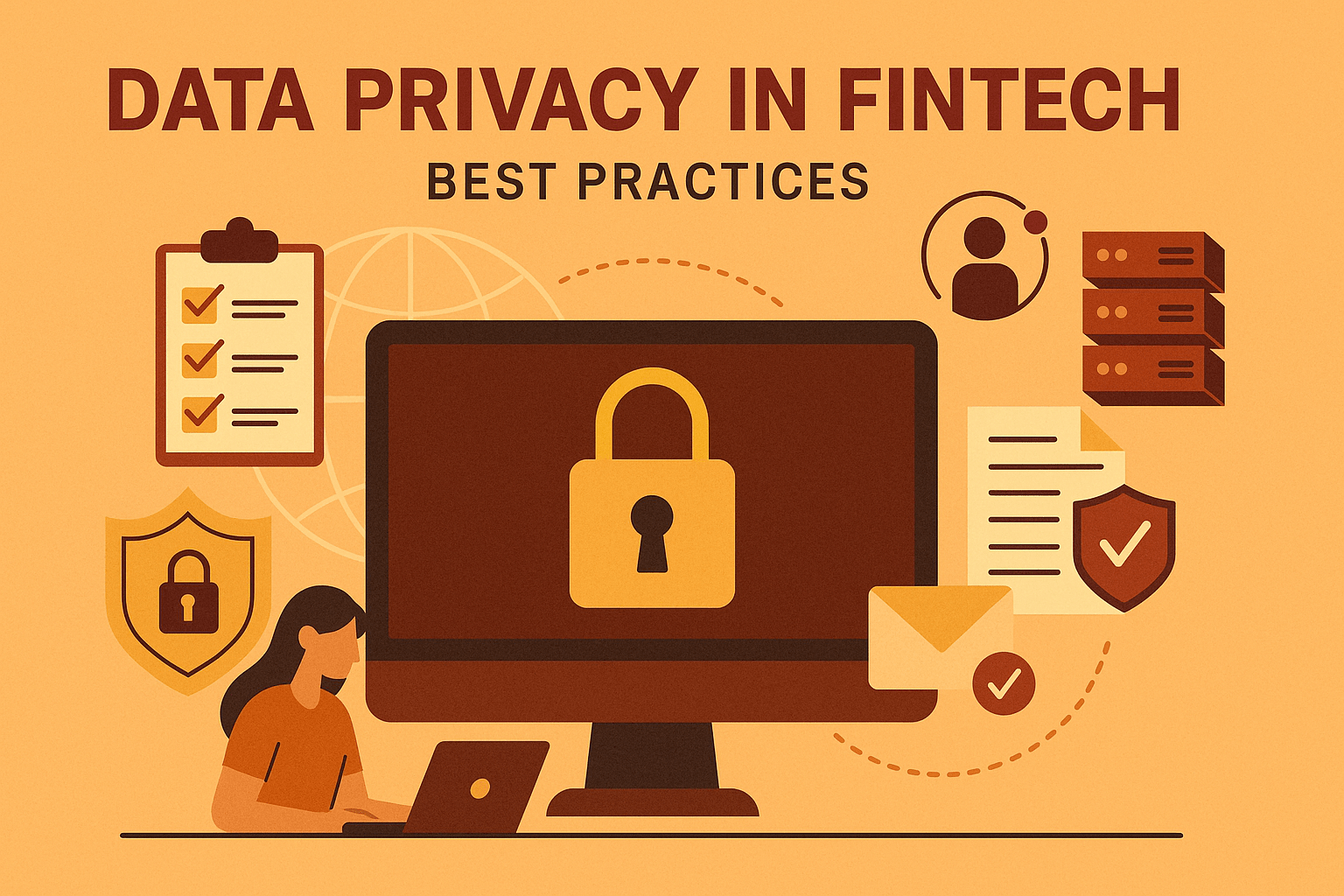
Introduction
In the ever-evolving world of Fintech, one thing is clear—data is the new currency. But with great data comes great responsibility. Fintech companies are handling highly sensitive financial and personal information, making them irresistible targets for cybercriminals. That’s why data security and privacy aren’t just “good-to-haves”—they’re survival tools.
Understanding the Fintech Landscape
What is Fintech?
Fintech, short for financial technology, represents a fusion of finance and digital innovation. From mobile banking apps and online investment platforms to crypto exchanges and digital wallets—Fintech is redefining how we manage money.
Why Fintech is a Prime Target for Cyber Threats
Think about it: Fintech platforms often hold the keys to users’ personal and financial data. That includes bank account numbers, credit card info, investment history, even government IDs. This makes them a goldmine for hackers. Combine that with rapid growth, evolving technology, and third-party integrations—and you’ve got a recipe for vulnerability.
The Importance of Data Security in Fintech
Types of Data Fintech Companies Handle
- Personally identifiable information (PII)
- Financial transaction data
- Biometric identifiers (like fingerprints or facial scans)
- Credit scores and loan history
Consequences of Data Breaches
Breaches don’t just hurt the bottom line—they destroy trust. A single leak can result in:
- Regulatory fines
- Lawsuits
- Customer churn
- Permanent brand damage
Key Challenges in Fintech Data Security
Increasing Sophistication of Cyber Threats
Cybercriminals are evolving fast. From phishing and ransomware to insider threats and API exploits, the attacks are smarter, faster, and harder to detect.
Regulatory Complexity Across Borders
Operating globally? That means juggling GDPR, CCPA, and countless other regional laws. One misstep and you’re staring down a lawsuit or fine.
Scalability and Third-Party Risk
As Fintechs scale, they rely more on third-party vendors. Each vendor adds another potential point of vulnerability.
Best Practices for Data Security and Privacy in Fintech
End-to-End Encryption
Encryption ensures that even if data is intercepted, it’s unreadable to outsiders.
How It Works and Why It Matters
Data is encrypted on the sender’s device and decrypted only on the recipient’s end—making “man-in-the-middle” attacks nearly impossible.
Multi-Factor Authentication (MFA)
This adds an extra layer of security, requiring users to verify their identity through two or more methods—like a password and a fingerprint.
Securing User Access
MFA is especially crucial for account logins, admin dashboards, and money transfer actions.
Secure API Integrations
APIs are Fintech lifelines, but they can be major vulnerability points if not secured with tokens, rate limits, and encryption.
Real-Time Fraud Detection and Monitoring
Using AI and machine learning, Fintech platforms can detect unusual patterns and flag them instantly—sometimes stopping fraud before it happens.
Data Minimization Principles
Only collect the data you actually need. Less data = less risk.
Cloud Security Protocols
If you’re hosting data in the cloud, implement strong access controls, encryption, and backups. Choose cloud providers with solid compliance certifications.
Zero Trust Architecture
Trust no one—literally. Even internal users must verify and re-authenticate before accessing sensitive data.
Regular Penetration Testing and Audits
Find the holes before the hackers do. Simulated attacks and third-party audits can uncover weak points in your system.
Employee Training and Awareness
Humans are often the weakest link. Regular training helps employees spot phishing scams and follow secure practices.
Regulatory and Compliance Considerations
GDPR (Europe)
Requires user consent, data minimization, and the right to be forgotten.
CCPA (California)
Gives consumers rights over their data, including disclosure, deletion, and opt-out.
PCI DSS
Applies to anyone handling credit card data. Requires encryption, access control, and regular audits.
How to Build a Compliance-First Culture
Make compliance everyone’s responsibility—from your developers to your marketers. Embed privacy in your product design (privacy by design).
The Role of AI and ML in Fintech Security
Threat Detection with Machine Learning
ML algorithms can spot abnormalities in massive data sets that humans would miss.
Behavioral Analytics for Anomaly Detection
Is a user suddenly logging in from another continent? AI can flag that in real-time.
Case Studies of Major Fintech Breaches
Lessons Learned from Real-World Failures
- Robinhood (2021): A social engineering attack affected 7 million users. The lesson? Train your support staff better.
- Dave App (2020): 7.5 million user records leaked due to a third-party breach. Vendor risk is real.
Building Customer Trust Through Transparency
Privacy Policies That Users Actually Understand
Use plain language. No legal jargon. Make users feel informed—not confused.
Communication in the Event of a Breach
Own the narrative. Be quick, honest, and transparent. It’s the best way to rebuild trust.
Future Trends in Fintech Security
Decentralized Identity (DID)
Empowers users to control their identity and authentication—without relying on third-party providers.
Blockchain for Secure Transactions
Immutable, transparent, and decentralized—blockchain offers a secure alternative for handling transactions and data.
Conclusion
Fintech is changing the way we interact with money, but innovation can’t come at the cost of security. With cyber threats growing more complex and regulations tightening, companies that prioritize data security and privacy will not only survive—they’ll thrive. Implementing robust security practices and staying compliant isn’t just about avoiding fines—it’s about earning trust, and in the world of finance, trust is everything.
❓ FAQs
1. What is the biggest security risk in Fintech?
Phishing and social engineering attacks remain the most common and dangerous threats, often bypassing even the strongest technical defenses.
2. How can small Fintech startups secure customer data?
By using secure cloud services, enforcing encryption, implementing MFA, and training staff—even small startups can build strong defenses.
3. What are the most common compliance frameworks in Fintech?
GDPR, CCPA, and PCI DSS are among the top frameworks Fintechs must adhere to, depending on their geographic and operational scope.
4. How does blockchain enhance data privacy in Fintech?
Blockchain adds transparency and immutability to financial transactions, making unauthorized changes almost impossible.
5. What role do customers play in ensuring data security?
Customers should use strong passwords, enable MFA, and stay alert to phishing scams. Security is a shared responsibility.






